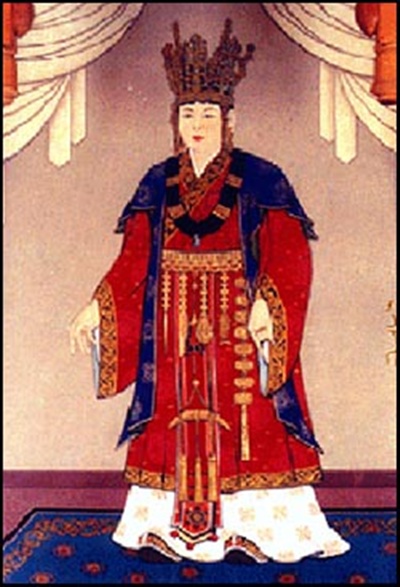There was a time, long ago, when the status of women was relatively high among some kingdoms of the world. The Silla Kingdom of Korea was one such realm, even having queens as rulers. This was in a time before the Confucian Model came into play and women were placed in a more subordinate position within family and society. In the 600s, however, the model did not exist in Korea and the Silla Dynasty had a queen in 632, when twenty-six year old Princess Deokman became Queen Seondeok of Silla.
Princess Deokman was born in 606 CE to King Jinpyeong and Queen Maya. She was to be named as King Jingyeong’s successor after no sons were born to him during his reign. It was unusual for a woman to become a ruler in her own name, as queens had previously ruled only as regents or as queen dowager. Queen Seondeok, however, was chosen by her father because of her renowned intelligence. There is a legend from her youth of when the Emperor Taizong of Tang China sent her a box of poppy seeds accompanied with a painting of what the flowers looked like. When studying the painting, Princess Deokman observed that whilst flower itself was pretty, it had no scent because “if it did, there would be butterflies and bees around the flower in the painting”. When the poppies were planted and bloomed, the flowers were indeed odourless.
Queen Seondeok had many great achievements throughout her reign. The world’s oldest astronomical observatory, the Cheomseongdae, is standing because of her interest in the arts and education. The queen also encouraged Buddhism within her kingdom, building many temples in honour of the relatively new religion. These temples included the Hwangnyongsa, with its enormous wooden pagoda reaching eighty meters tall and included nine levels, representing each one of the Silla Kingdom’s enemies.
Queen Seondeok did not have an easy reign, though. Towards the end of her reign she faced a rebellion from Lord Bidam, a Silla nobleman, who rallied supporters to overthrow the queen by promoting his belief that women could not rule the country. The rebellion was crushed with the leaders executed and the queen won a great victory.
The queen herself died on the 17th January 647; the exact day she had predicted herself some years before her passing. She was buried on Nangsan – “Wolf Mountain” – where her tomb can be visited today. Many Koreans visit this place to pay tribute to the queen who led her country with honour and courage.
Watch the first part of the Korean TV drama, The Great Queen Seondeok, below.
-Claire Amundson
Junior Girl
Girl Museum Inc.

